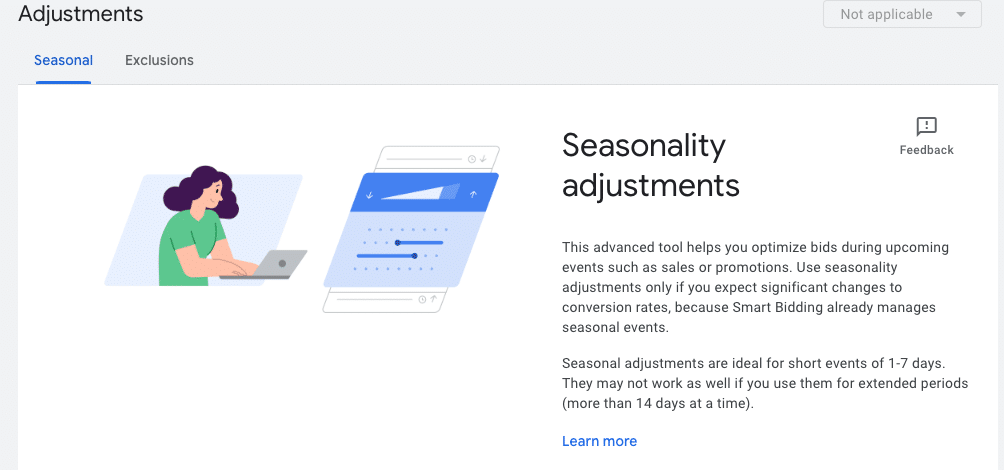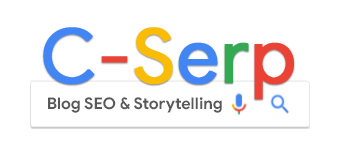Your guide to Google Ads Smart Bidding

Are you controlling your paid search campaigns, or are they controlling you?
If you can’t confidently articulate your smart bidding strategies, you lose conversions and credibility.
True mastery isn’t just about setting up a campaign and picking a bid strategy; it’s about owning and communicating the process effectively.
This guide is your roadmap to clarity and control, breaking down 2025’s Smart Bidding into actionable insights.
We’ll cover key concepts, common mistakes, and actionable tips for picking the right strategy.
Smart Bidding in Google Ads: AI-powered bid optimization
Smart Bidding is Google Ads’ advanced form of automated bidding.
It leverages machine learning and real-time auction signals to optimize bids for conversions or conversion value.
It dynamically adjusts bids to achieve specific goals, such as maximizing conversions at a target cost or achieving a desired return on ad spend.
Key Smart Bidding strategies include:
Target CPA (cost per action)
- Optimizes bids to achieve conversions at a target cost per action.
- Ideal for campaigns where you have a specific cost you’re willing to pay for each conversion (e.g., lead, sale).
- Example: “We aim to acquire leads at a CPA of $50.”
Dig deeper: Everything you need to know about Target CPA bidding
Target ROAS (return on ad spend)
- Focuses on achieving your desired revenue for every dollar spent.
- Best for ecommerce or campaigns with clear revenue goals.
- Example: “We want to achieve a ROAS of 400%, meaning $4 in revenue for every $1 spent.”
Maximize Conversions
- Automatically sets bids to achieve the most conversions within your budget.
- Useful when you want to drive as many conversions as possible, regardless of cost.
- Example: “Our goal is to maximize the number of sign-ups within our daily budget.”
Dig deeper: Mastering Maximize conversions bidding in Google Ads
Maximize Conversion Value
- Prioritizes higher-value conversions for greater overall return.
- Effective when different conversions have varying values to your business.
- Tends to favor selling more expensive products or services, as they contribute more to the total conversion value.
- Example: “We value a ‘request for quote’ more than a ‘newsletter sign-up,’ so we want to maximize the total value of conversions.”
Dig deeper: Maximize Conversion Value: Google Ads bidding explained
Maximize Clicks
- Automatically sets your bids to get as many clicks as possible within your budget.
- Useful for top-of-funnel campaigns where the goal is to drive traffic to a site.
- Example: “This campaign is designed to drive as much traffic to our new blog post as possible.”
Enhanced CPC (ECPC)
- A semi-automated bidding strategy that adjusts your manual bids to try and get more conversions.
- Google Ads adjusts your manual bid up or down based on the likelihood of a conversion.
- Example: “We are using manual bidding but want to use Google’s signals to increase conversions where possible.”
Viewable CPM (YouTube)
- Focuses on maximizing viewable impressions of your display or skippable in-stream video ads.
- Ideal for brand awareness campaigns where the goal is to get your message seen by as many people as possible.
- Example: “We want to ensure our brand message is visibly displayed to our target audience on YouTube.”
Cost Per View (YouTube)
- Optimizes bids to get the most video views or interactions within your budget.
- Best for campaigns focused on driving engagement with your video content.
- Example: “We are running a video campaign on YouTube and want to maximize the number of views we receive.”
It’s crucial to understand that while setting a Target CPA or ROAS provides strategic direction, achieving those exact targets isn’t guaranteed.
I’ve had situations where a media planner pushed for an immediate switch to a specific CPA goal.
They wanted the target set at four times and wouldn’t budge or try to understand why the campaign was set at two times.
A common misconception is that simply setting a desired metric will automatically yield the desired results.
In practice, achieving optimal performance often requires a nuanced approach.
This may involve:
- Gradual bid adjustments.
- A willingness to accept temporary fluctuations in ROAS for broader account health.
- A comprehensive evaluation of multiple factors, including budget, historical campaign performance, and keyword strategy.
It’s essential to understand that Smart Bidding strategies, while powerful, require strategic oversight and a holistic understanding of account dynamics.
Success should be measured within the context of overarching account objectives, not solely focusing on individual campaign metrics.
Understanding manual, automated and smart bidding in Google Ads

Manual bidding allows you to control bid adjustments completely, making it ideal for certain industries, such as legal or home services, where fluctuating competition requires ongoing oversight. However, it requires more time and effort.
It’s like driving a car where you control every gear shift and pedal movement.
Automated bidding simplifies bid management by using algorithms to adjust bids.
While automated bidding can save time, its generic approach doesn’t account for nuanced conversion goals.
Think of this as engaging cruise control. You tell the car (Google Ads) your general desired speed (goal), and it adjusts the engine (bids) to maintain that pace.
Smart Bidding, however, takes automated bidding further by using real-time signals and advanced machine learning to predict the likelihood of conversions and their value, tailoring bids to individual auctions.
It’s especially effective for campaigns with clear conversion goals and sufficient historical data.
This is like having a self-driving car with an incredibly sophisticated navigation system.
It’s important to know that while all Smart Bidding is automated, not all automated bidding qualifies as Smart Bidding.
Automated bidding covers a wider range of strategies, some of which are more basic and don’t rely on real-time signals or advanced machine learning.
In essence:
- Manual: You control every bid.
- Automated: Google’s algorithms handle bid adjustments based on your chosen strategy.
- Smart: Google’s machine learning optimizes bids in real-time for conversions and conversion value.
Smart Bidding: Advantages and risks
There are significant advantages to using Smart Bidding.
- Improved efficiency: Saves time by automating bid adjustments.
- Auction-time optimization: Factors in user intent, device, location, and other data points to optimize bids for each auction.
- Goal alignment: Customizes bids to match your campaign objectives, whether it’s maximizing volume or focusing on high-value actions.
While Smart Bidding offers significant advantages, missteps in implementation can lead to underwhelming results.
Here’s how to avoid common pitfalls and optimize your campaign performance.
Data dependency
Smart Bidding algorithms rely on robust historical data to make accurate predictions.
Campaigns with fewer than 30 conversions in the last 30 days may struggle to optimize effectively.
Start with manual bidding or Maximize Clicks to build a data foundation before switching to Smart Bidding. Boris Beceric, a Google Ads consultant and coach, said:
- “I guess most try Smart Bidding too early – without enough conversion volume. What usually helps: consolidate campaigns so you get more data flowing through a single campaign. Portfolio bidding – kinda the same, but consolidation takes place at the bid strategy level.
- “Micro conversions – try to add in the micro conversion that had the most volume and is closest to the ‘real’ conversion. Bonus: Reverse engineer CVR and conv value from micro to macro conversion and adjust tCPA accordingly.”
Goal misalignment
Using the wrong bidding strategy can hinder performance.
For example, applying Target ROAS to a new campaign with limited data can set unrealistic expectations and reduce reach.
Align bidding strategies with your goals.
When prioritizing profitability, use Maximize Conversions for volume and Target ROAS or Target CPA. Harrison Hepp, owner of Industrious Marketing, said:
- “I had a client who was hybrid ecommerce and lead gen (they sold products, but high-priced deals were lead gen), and they insisted on tracking purchases and leads in every campaign. We constantly battled major fluctuations in the campaigns as they’d swing back and forth between getting purchases or leads and trying to optimize to both.
- “It also made bid strategy selection really hard, as conversion value bidding would deprioritize leads (no value was tracked), but CPA bidding wasn’t efficient for purchases because of differences in product prices. It really showed how aligning your goals and bid strategy is critical for steady performance. It also underlined how the right bidding strategy can prioritize success in campaigns.”
Monitoring is non-negotiable
Despite its automation, Smart Bidding is not a “set it and forget it” tool.
Failing to monitor campaigns can lead to wasted ad spend and missed optimization opportunities.
Regularly review performance metrics, adjust campaign parameters, and stay proactive in managing Smart Bidding strategies.
- “Custom columns/Segment views: We want to measure efficiency, so things like conv value/conv, search impression share, etc.” said Ameet Khabra, owner of Hop Skip Media.
Even with the most advanced AI behind Smart Bidding, performance optimization requires vigilance.
Regularly review the following metrics to ensure your strategy is working as intended:
- CPA: Is your Target CPA being met?
- ROAS: Are the conversions driving sufficient revenue?
- Conversion rates: Are conversions coming from the right audience segments? Or are you paying for competitors to download your white papers and marking that down as a lead?
- Search term reports: Are irrelevant keywords consuming a significant portion of your budget? Unprofitable keywords can be why a campaign is not meeting goals.
- Conversion tracking accuracy: If conversion tracking is improperly implemented, Smart Bidding will optimize based on inaccurate data, reducing effectiveness.
Double-check your conversion tracking setup. Assign accurate values to conversions to reflect their true business impact. Khabra said:
- “My favorite saying lately is ‘garbage in, garbage out,’ and that is definitely a large component of conversion tracking. Ensuring that we’ve identified the correct conversions that move the needle is half the battle. Implementing the tracking and double-checking that it is correct – collecting conversions – is the second half.”
Budgetary awareness
Strategies like Maximize Conversions and Maximize Clicks will attempt to spend your entire daily budget.
If your budget is set too high, this can lead to overspending.
Start with smaller daily budgets and gradually increase them while monitoring performance.
Realistic targets
Setting overly aggressive Target CPA or Target ROAS goals can limit your campaign’s reach, as the algorithm will avoid auctions it deems unprofitable.
Begin with realistic targets slightly higher or lower than your current average. Allow time for the algorithm to learn before refining the target.
Best practices for Smart Bidding in Google Ads
To ensure optimal performance, follow these best practices for implementing Smart Bidding in your Google Ads campaigns.
1. Feed accurate data
Ensure your conversion tracking is set up correctly.
Assign meaningful values to conversions – whether it’s a purchase, lead form submission, or newsletter signup.
2. Leverage seasonality adjustments
Use seasonality adjustments in Google Ads to guide Smart Bidding algorithms for short-term changes (e.g., holiday sales or promotions).
This prevents excessive or insufficient bids during periods of fluctuating demand.

3. Start with conservative budgets
Begin with smaller budgets and avoid aggressive bid caps that may limit auction participation. Allow the algorithm to learn and adapt gradually.
4. Prioritize business value over conversion volume
Align your bidding tactics with broader business goals. Instead of focusing solely on conversion volume, consider how each conversion contributes to revenue or lifetime customer value.
5. Test and adapt
Use Google Ads experiments to test different strategies.
For example, compare Target CPA with Target ROAS to identify which delivers better results for your campaigns.
Google Ads Experiments let you directly compare bid strategies in real-world scenarios.
Duplicate your campaign, allocate a split percentage to a new strategy (like comparing Target CPA vs. Target ROAS), and see concrete results with statistical significance.

Final thoughts
Smart Bidding isn’t just about knowing which technical settings to adjust.
It’s about understanding how to make Google’s automated tools align with your business goals.
The digital landscape evolves quickly, so it’s essential to stay adaptable, continuously monitor performance, and make adjustments as needed.
Nail the strategy, stay proactive, and you’ll set yourself up for long-term success.


